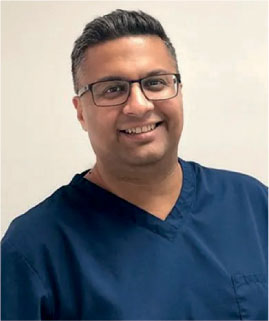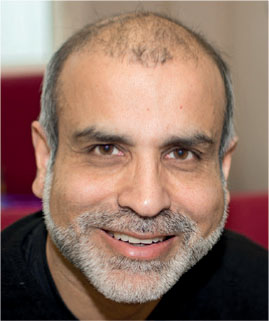Article


Dentistry stands out as a unique profession where graduates, upon completing their Bachelor of Dental Surgery (BDS) or equivalent (which enables registration with the appropriate regulatory body and sometimes is followed by foundation training), are qualified to provide treatment across multiple disciplines. These disciplines include, but are not limited to, restorative dentistry, prosthodontics, periodontics and endodontics.
Unlike medicine, where specialization is often required for advanced practice in various fields, general dental practitioners (GDPs) are trained to deliver comprehensive care across these disciplines provided it falls within their scope of practice. However, in today's rapidly evolving dental landscape, the challenge lies not in obtaining the licence to practise, but in acquiring and maintaining the clinical skills, knowledge and expertise needed to thrive in an increasingly competitive and scrutinised environment. Thus, maintaining the standards of patient care.
Bridging the competence gap is essential in this context. This term refers to the disparity between the skills, knowledge, or abilities that an individual currently possesses and the skills required to effectively fulfil a particular role.
A dual-system challenge: the ‘ying and yang’ of dental practice
Newly qualified GDPs in the UK have the option to work within the National Health Service (NHS) and/or private practice. Many aspire to transition towards private practice, where they believe they will enjoy greater clinical freedom, improved remuneration and better working conditions.
While the NHS can provide structured employment and a steady patient base, delivering dental care under NHS arrangements in the primary care setting may place significant constraints on clinical decision-making. Budgetary limitations often dictate treatment options, which many GDPs find restrictive in terms of the range and standard of treatments that they can offer their patients. As a result, an increasing number of dental practitioners are opting to stop offering NHS dental care.
In contrast, private practice offers the opportunity to expand clinical skills, adopt new materials and techniques, and provide more personalized care, thereby enabling practitioners to have a greater choice in negotiating the time, cost and quality ‘trilemma’.
Entering private practice immediately after foundation training or an equivalent programme is feasible, especially given the scarcity of training placements in preferred locations. However, transitioning into private practice is not without its challenges. It requires a higher level of core competencies in at least six areas: 1
Success in providing private dentistry often demands a higher level of clinical expertise and patient management skills, usually not achieved soon after undergraduate training. Developing a competence as well as competency-based outlook in further training is required.2 Furthermore, the business aspects of private dentistry, such as marketing, patient retention and financial management, are not always thoroughly covered in the undergraduate curriculum. This leaves many GDPs unprepared for the realities of running a practice.
The limitations of CPD and the quest for clinical excellence
Continuing Professional Development (CPD) is a mandatory requirement for General Dental Council (GDC) registration, ensuring registrants engage in lifelong learning. However, adhering to the essential requirements of the CPD framework may not necessarily equip GDPs with the advanced skills required to excel in general practice. Many CPD courses focus on regulatory compliance, theoretical updates or superficial knowledge enhancement rather than advanced technical proficiency. As a result, GDPs seeking to refine their abilities beyond the basic competencies must look elsewhere, often towards postgraduate training.
The fear of litigation and defensive dentistry
A significant concern among recently qualified GDPs is the growing fear of litigation3 and professional scrutiny. The latter, together with increasing patient expectations, encourage and drive defensive dentistry – where the clinician may act in a way to avoid patient claims for fear of dental negligence or being reprimanded by the GDC. In the authors' opinion, there is often a misguided perception that aligning the dentition, often for minor discrepancies, and applying composite bonding is a ‘safer’ option, notwithstanding the complications that can arise from inappropriate patient selection and the long-term maintenance required for the restorations placed. Many young practitioners also feel vulnerable, fearing that even minor clinical misjudgements could lead to severe professional consequences. This apprehension often discourages them from undertaking more complex procedures, thereby limiting their clinical growth and confidence. This culture of fear underscores the urgent need for structured and high-quality post-qualification training that balances both skill enhancement and ethical, evidence-based practice.
The postgraduate training dilemma: quality vs commercialization
Postgraduate education is often described as a continuum. To bridge the competency gap left by undergraduate education, many GDPs turn to postgraduate (PG) courses. Historically, the GDC regulated and accredited postgraduate training for GDPs, ensuring that courses met specified educational criteria. However, the current deregulation of postgraduate dental courses has created a vacuum, leading to a plethora of courses in what is now a competitive marketplace and a commercial enterprise. The absence of relevant independent accreditation means that the quality and legitimacy of these courses vary significantly. Many of these courses, particularly those marketed via social media, tap into the aspirations of some young dentists by promising rapid skill acquisition and financial success. The latter is often perceived to be a measure of success. While some programmes are run by experienced educators with a strong scientific backing, others lack rigorous oversight and instructors may have questionable credentials. Without minimum teaching standards or curriculum guidelines,4 there is a risk that GDPs are exposed to techniques and approaches that are not evidence based and are heavily influenced by commercial interests rather than unbiased scientific principles.
This situation is further exacerbated by the involvement of external market forces,5 and industry-driven key opinion leaders (KOLs) – ‘influencers’ – who often shape the content of postgraduate courses to align with specific commercial products or techniques. This conflict of interest casts doubt on the impartiality of the education provided. Industry-driven instruction may compromise ethical decision-making, which requires thorough critical appraisal of the available evidence.
The short-course epidemic: fast-track training at a cost?
A particularly concerning trend is the proliferation of short courses promising GDPs a pathway to quick financial gains. Many of these courses focus on high-income procedures, such as cosmetic dentistry, injectables and short-term orthodontics, often bypassing the essential fundamentals of comprehensive whole patient care. The allure of quick training, or in some cases, no training at all, and the lure of immediate profits may tempt some GDPs to undertake procedures for which they are ill prepared and to overlook the importance of case selection, which can lead to errors, misdiagnosis and outdated treatments.
This fast-tracked approach, although financially appealing, dilutes the core principles of clinical dentistry, potentially leading to compromised patient outcomes and increased litigation and regulatory risks. The long-term sustainability of such training models must therefore be critically examined to ensure that (young) GDPs are not led down a path that prioritizes profit over patient-centred, ethical and evidence-based care.
University-based training: a missed opportunity?
Many universities offer structured postgraduate programmes, these courses often come with high costs and a heavy academic bias. The risk is that emphasis on research and theoretical knowledge may displace practical, hands-on skills training. As a result, university courses, while having institutional credibility and status, do not always meet the clinical needs of practising GDPs. This disconnect between academic excellence and real-world application remains a significant barrier, sometimes discouraging GDPs from pursuing further university education.
The way forward: a call for reform in postgraduate dental training
To address these challenges, it is imperative that postgraduate dental education available for the GDP undergoes reform to establish a structured, independent, and standardized training framework. The following key areas need urgent attention:
Conclusion: towards a sustainable model for lifelong learning
The journey of a general dental practitioner does not end at graduation; it is a lifelong pursuit of excellence. However, the current landscape of postgraduate education is fragmented, leaving GDPs vulnerable to commercial exploitation, industry-driven bias and inadequate skill development. To safeguard the future of the profession, stakeholders, including regulators, educators, universities and professional associations, must collaborate to create a transparent, structured and quality-driven postgraduate education system for the GDP. Only then can we ensure that GDPs are empowered with the skills, knowledge and confidence to practise ethical, high-quality dentistry in a competitive and evolving market.
